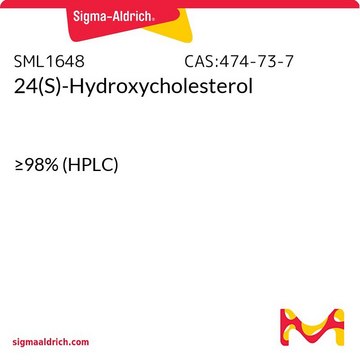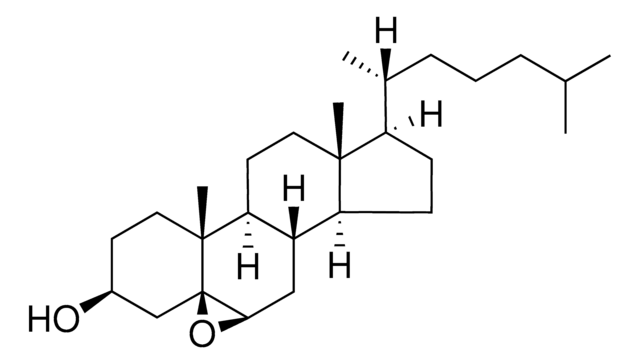추천 제품
분석
≥98% (HPLC)
양식
ethanol solution (5 mg/ml)
약물 제어
regulated under CDSA - not available from Sigma-Aldrich Canada
색상
colorless to yellow
배송 상태
dry ice
저장 온도
−20°C
생화학적/생리학적 작용
Docosahexaenoyl ethanolamide (DHEA) has the ability to block the proliferation of head and neck squamous cell carcinoma (HNSCC) cell.
Docosahexaenoyl ethanolamide (DHEA) is a lipid signaling molecule present in brain and retina at concentrations, similar to those for arachidonoyl ethanolamide. DHEA binds to the rat brain CB1 receptor with a Ki of 324 nM. It exhibits anti-inflammatory and organ protective activity. Studies show that docosahexaenoyl ethanolamide is the mediator of neurite growth and synaptogenesis in hippocampal neurons, resulting in enhanced synaptic activity.
Docosahexaenoyl ethanolamide (DHEA), a lipid signaling molecule, binds to the rat brain CB1 receptor and exhibits anti-inflammatory and organ protective activity.
특징 및 장점
This compound is featured on the Cannabinoid Receptors page of the Handbook of Receptor Classification and Signal Transduction. To browse other handbook pages, click here.
신호어
Danger
유해 및 위험 성명서
Hazard Classifications
Eye Irrit. 2 - Flam. Liq. 2
Storage Class Code
3 - Flammable liquids
WGK
WGK 3
Flash Point (°F)
55.4 °F
Flash Point (°C)
13 °C
가장 최신 버전 중 하나를 선택하세요:
5-lipoxygenase mediates docosahexaenoyl ethanolamide and N-arachidonoyl-L-alanine-induced reactive oxygen species production and inhibition of proliferation of head and neck squamous cell carcinoma cells
Park SW, et al.
BMC Cancer, 16(1), 458-458 (2016)
문서
Sigma-Aldrich offers many products related to cannabinoid receptors for your research needs.
자사의 과학자팀은 생명 과학, 재료 과학, 화학 합성, 크로마토그래피, 분석 및 기타 많은 영역을 포함한 모든 과학 분야에 경험이 있습니다..
고객지원팀으로 연락바랍니다.







